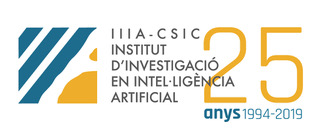The Noos Representation Language
Phd Contents
Available copy of all the Phd [Postscript]
1 Introduction
Chapter 1 presents The motivations, goals, and main contributions of the thesis.
1.1
Motivation
1.2
Goals and contributions of the thesis
1.3
Structure of the thesis
2 Background
Chapter 2 reviews the main research relevant to our thesis and discusses their contributions and limitations. We present research on knowledge modeling methodologies for analyzing and developing knowledge systems; research on integrated architectures for exploring the relationships among problem solving, learning, and knowledge representation; research on reflective representation languages for providing introspection capabilities on knowledge systems; and finally, we discuss the role of reflection in learning.
2.1
Knowledge modeling frameworks
2.2
Integrated architectures
2.3
Reflective representation languages
2.4
Introspective learning
2.5
Conclusions
3 The Noos Approach
Chapter 3 presents the Noos representation language. The language is introduced incrementally. First, The Noos modeling framework is presented. Next, the basic elements of the language such as descriptions, refinement, references, methods, and the basic inference are described. Then, the reflective capabilities of Noos are described introducing elements such as metalevels, tasks, reflective operations, reification, and reinstantiation. Next, a declarative mechanism for decision making about sets of alternatives, called preferences, is presented. Finally, the complete Noos inference engine is described.
3.1
The Noos modeling framework
3.2
The Noos language
3.3
Reflection
3.4
Preferences
3.5
Inference in Noos
3.6
Summary
4 Memory, Experience, and Learning
Chapter 4 presents the Noos capabilities for reasoning about experience and the integration of learning and problem solving. First, the notion of episodic memory is introduced. Then, introspective mechanisms such as retrieval and perspectives are presented. Next, three different families of learning techniques such as case-based reasoning, inductive learning, and analytical learning, are presented with examples of how they have been integrated in Noos.
4.1
Episodic knowledge in Noos
4.2
Retrieval
4.3
Prespectives
4.4
Reasoning and learning
4.5
Case-based reasoning
4.6
Inductive learning
4.7
Analytical learning
4.8
Summary
5 Noos Formalization
Chapter 5 presents feature terms, a formalism for describing the Noos language. Feature terms are introduced using a syntax notation based on the Lambda N Calculus. Then, using the work on feature structures a semantics based on the notion of partial descriptions is presented. The results obtained by the research on feature structures are also adapted for providing several equivalent representations of feature terms.Chapter 5 introduces a formalism for describing preferences based on the notion of pre-orders. Two kinds of basic operations are defined over preferences: preference operations , that take a set of source elements and an ordering criterion and build a preference (a partially ordered set), and preference combination operations , that take two preferences and a combination criterion and build a new preference.
Next, using feature terms perspectives are defined. Perspectives are formalized as second order feature terms that denote sets of terms.
Finally, we describe formally the inference in Noos using Descriptive Dynamic Logic, a propositional dynamic logic for describing and comparing reflective knowledge systems.
5.1
Basic notions of Lambda N Calculus
5.2
Noos formal syntax
5.3
Translation rules from Noos to Lambda N
5.4
Using variables in feature terms
5.5
Semantics
5.6
Term subsumption
5.7
Representing feature terms as labeled graphs
5.8
Understanding feature terms as clauses
5.9
Evaluable feature terms
5.10
Preferences
5.11
Perspectives
5.12
Descriptive Dynamic Logic
5.13
Modeling Noos inference using DDL
5.14
Summary
6 Applications
Chapter 6 provides a set of examples of how diverse applications have been developed using Noos by several persons at the IIIA. Specifically, the chapter present six applications developed using Noos: CHROMA, SPIN, SHAM, GYMEL, SaxEx,and NoosWeb.
6.1
CHROMA
6.2
SPIN
6.3
SHAM
6.4
GYMEL
6.5
SAXEX
6.6
NoosWeb
6.7
Summary
7 Conclusions and Future Work
Chapter 7 summarizes the main contributions of the thesis and discuss further directions of research.
7.1
The Noos language and feature terms
7.2
Memory and learning
7.3
Methods and applications
7.4
Future work
A The Noos Development Environment
Appendix A presents the Noos development environment including development facilities such as browsing, tracing, and the extension of the built-in methods.
A.1
Defining feature terms in Noos
A.2
The predefined sort hierarchy of Noos
A.3
Episodic memory
A.4
Browsing
A.5
Tracing
A.6
Extending built-in methods
B Glossary
Appendix B provides a glossary of the main concepts introduced in this thesis.
C The Noos Syntax
Appendix C presents the complete syntax of the Noos language, using BNF notation, and the collection of compact descriptions for built-in methods.
D Built-in Methods
Appendix D presents the complete list of Noos built-in methods describing their required features and their functionality.



